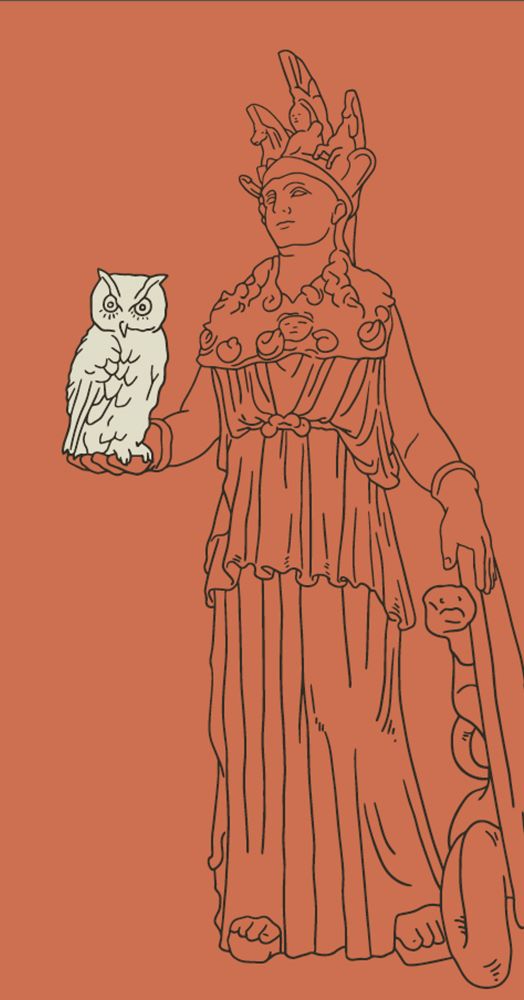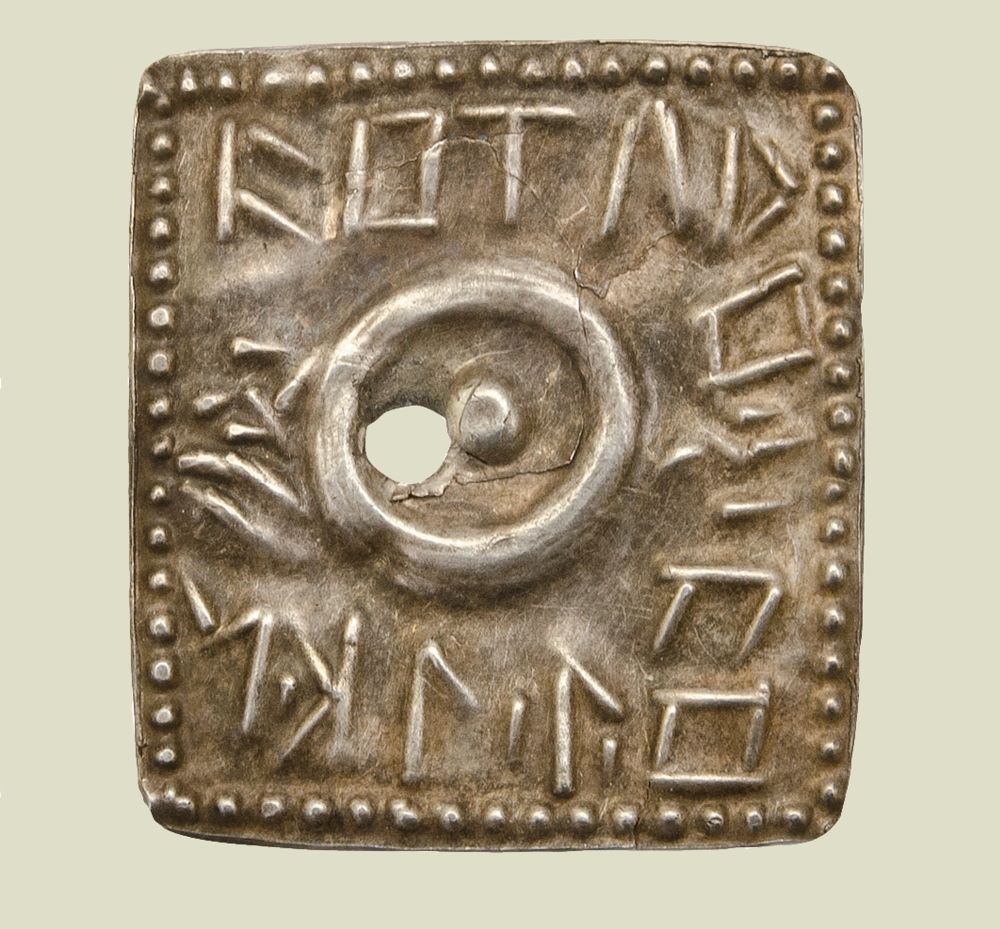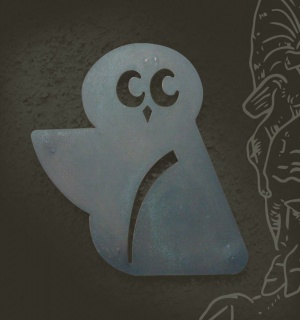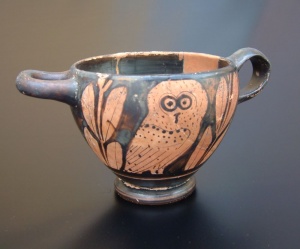Following Athena and Minerva in Posočje
Athena, the Greek goddess of art, military discipline and protector of cities and crafts, was accompanied by an owl, and often by the goddess of victory, Nike. She is shown with an aegis, Medusa's head on her chest and a helmet on her head. In mythology, she appears as an assistant to many heroes, including Heracles, Jason and Odysseus.
When classical civilization was shining in Greece, Posočje was still in the Iron Age. Nevertheless, there was an exchange between them, which is archaeologically proven by prestigious products. Among the more famous is the Attic owl skyphos from the second half of the 5th century BC, discovered in a cremation grave at the necropolis at Most na Soči.

Interpretive Drawing of the statue of Athena Parthenos.
Author: Gorazd Koščak
It seems that such cups, decorated with the motif of an owl between olive branches, had a special meaning and were used in a domestic religious ceremony or in sacrificial ceremonies dedicated to the goddess Athena.

The owl from the owl skyphos is responsible for the symbol and name of the cultural-historical trail »Čez Most po modrost« at Most na Soči.
Photo: Miha Mlinar Tolminski muzej Museum
Minerva, the Italic goddess of wisdom and strategic warfare as well as the patroness of art and commerce, has been worshiped by the Romans since the 2nd century BC equated with Athena. She was depicted in armor and with a spear and an owl, a symbol of wisdom and knowledge.
Objects representing the goddess Minerva were discovered at three sites in Posočje. The discoveries of statuettes of Minerva are linked to sanctuaries, such as those on Gradič near Kobarid and on Ravelnik near Bovec. The third monument to Minerva originates from the settlement Vrh gradu near Pečine on the edge of the Šentviška plateau, within which there was also a cult place. Perhaps in this context we can also see the bronze appliqué of the bust of the goddess Minerva, which was secondarily used as a weight for scales.

A silver offering plate with a Venetic inscription from the site Vrh Gradu near Pečine.
Photo: Marko Grego, Tolminski muzej Museum
Miha Mlinar
Tolminski muzej
Image Gallery and Catalogue of Museum Objects


